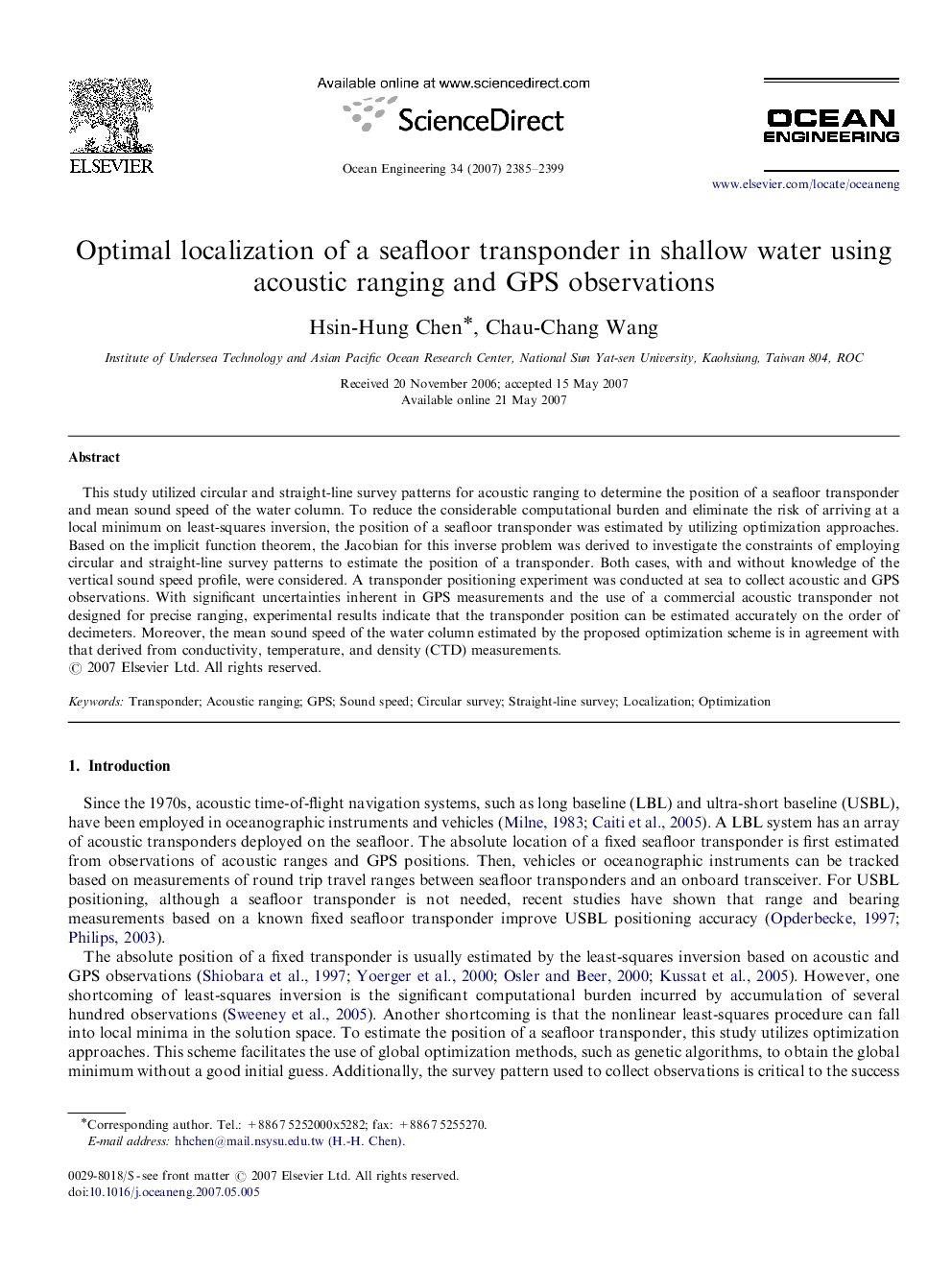| Article ID | Journal | Published Year | Pages | File Type |
|---|---|---|---|---|
| 1727464 | Ocean Engineering | 2007 | 15 Pages |
This study utilized circular and straight-line survey patterns for acoustic ranging to determine the position of a seafloor transponder and mean sound speed of the water column. To reduce the considerable computational burden and eliminate the risk of arriving at a local minimum on least-squares inversion, the position of a seafloor transponder was estimated by utilizing optimization approaches. Based on the implicit function theorem, the Jacobian for this inverse problem was derived to investigate the constraints of employing circular and straight-line survey patterns to estimate the position of a transponder. Both cases, with and without knowledge of the vertical sound speed profile, were considered. A transponder positioning experiment was conducted at sea to collect acoustic and GPS observations. With significant uncertainties inherent in GPS measurements and the use of a commercial acoustic transponder not designed for precise ranging, experimental results indicate that the transponder position can be estimated accurately on the order of decimeters. Moreover, the mean sound speed of the water column estimated by the proposed optimization scheme is in agreement with that derived from conductivity, temperature, and density (CTD) measurements.
